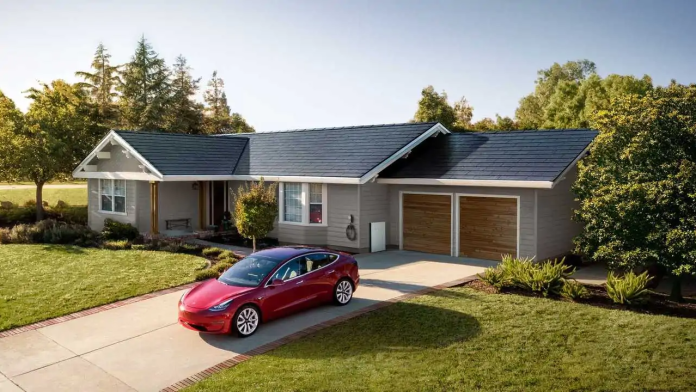A recent report in the New York Times examined how California uses huge rechargeable batteries to bank excess solar power in the middle of the day when it is not needed. The batteries can then be drawn down when local need for power is at a maximum in late afternoon and early evening.
These batteries are basically time-shifters. Within certain limits they can be an excellent idea.
The batteries already installed in California can store enough electricity to last for a few hours after sundown, reducing the need to burn natural gas to produce electricity then.
But batteries’ limited usefulness becomes clear when we consider longer time spans. As the New York Times report notes, “there’s far more solar power available in summer than in winter, and no battery can store electricity for months to manage these seasonal disparities.”
This statement is no exaggeration. The photovoltaic panels on my roof produce only one-fifth as much monthly electricity mid-winter as they do in the summer.
A better alternative to time-shifting surplus power can be location-shifting: moving it to somewhere else, where it is currently needed, through a grid.
I can remember shortwave radio broadcasts from the Netherlands — which could be heard anywhere — greeting listeners with “good morning, good afternoon or good evening.” The point was that when it is morning in some locations, it is afternoon or evening in other parts of the world.
In still other locations, it is the middle of the night. And in the middle of the night, solar PV panels obviously produce no electricity. But electricity will still be needed.
One way to produce nighttime electricity is to burn natural gas. But we will avoid that by building a worldwide grid allowing nighttime power to come in from areas where the sun is currently shining. Instead of shifting the time when solar energy is used this will shift the location where it is used.
The question naturally arises, which is the better approach: time-shifting or location-shifting? Either strategy is probably better than the current widespread practice: wastefully “curtailing” the output of solar PV panels when they could produce more electricity than is needed locally.
But location-shifting (grid) has one major advantage over time-shifting (batteries, etc). Batteries might be able to bank enough energy to get an area through the night or a day or two of bad weather. But to repeat the New York Times report, they can’t get us through the winter slump in locally produced solar energy.
Location-shifting avoids the winter problem because winter does not occur simultaneously everywhere on our planet. Winter in the Northern Hemisphere conveniently happens to be summer south of the Equator.
The worldwide grid will allow seasonal exchange of solar energy from south to north during our winter, and from north to south during our summers.
Of course a small amount of electricity is lost when transmitted long distances, even when using HVDC (high voltage direct current), which is much more efficient than AC (alternating current). But charging and discharging batteries also suffers from efficiency losses.
So do other possible methods of time-shifting, such as creating “clean hydrogen” using locally unneeded solar energy and then burning the hydrogen or running it through fuel cells later.
A worldwide grid — which is already being built — can pretty much eliminate even the need for batteries to handle nighttime and bad weather. A system which can handle the major fluctuations in solar energy from season to season will also automatically be able to handle the smaller daily fluctuations for which we presently need batteries.
Location-shifting will allow solar energy to provide electricity everywhere 24/7/365. It’s present intermittency problem will become a thing of the dismal past, as that past will be remembered by future generations living in the age of solar energy.






